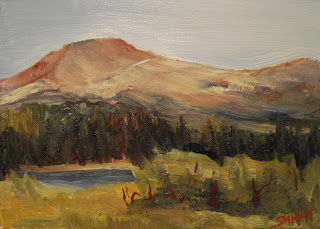
Amber Pears
6 x 6, oil on gessoed panel
On eBay with a starting bid of $30.00
COLLECTED
6 x 6, oil on gessoed panel
On eBay with a starting bid of $30.00
COLLECTED
This is a beautiful little painting. It's the preliminary study for the larger pear paintings on the damask cloth, where I was working out ideas about color and texture. I am particularly thrilled with the soft violet glow in the shadows and the way it works so well with the golden yellow color.
My pricing on eBay includes the shipping, and it usually takes 2 - 3 days to get to you. I have also added a buy it now price of $35.00. The painting that sold today started at the same terms but the bidding went higher than the $35.00 so I was thrilled, but I wonder if the buyer isn't kicking themselves for not grabbing it at the lower price. Well...that painting was also gorgeous! The buyer should be very happy anyway.
My pricing on eBay includes the shipping, and it usually takes 2 - 3 days to get to you. I have also added a buy it now price of $35.00. The painting that sold today started at the same terms but the bidding went higher than the $35.00 so I was thrilled, but I wonder if the buyer isn't kicking themselves for not grabbing it at the lower price. Well...that painting was also gorgeous! The buyer should be very happy anyway.





